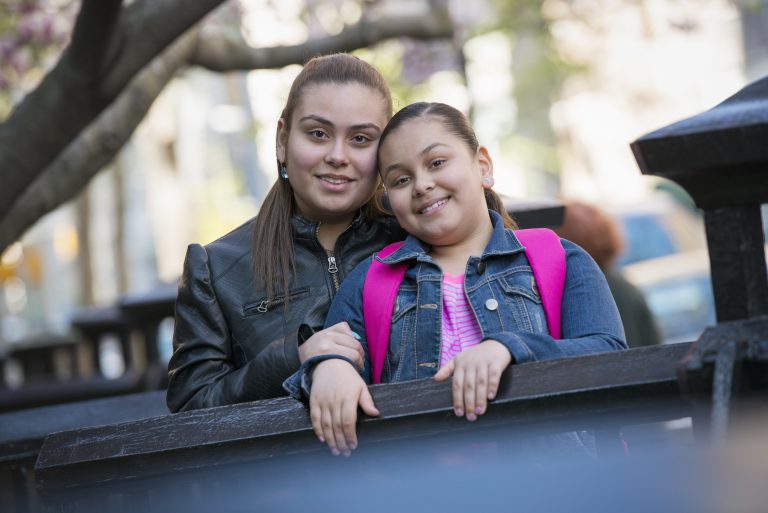At TalkingPoints, we know that building relationships across lines of difference is some of the most critical and rewarding work that educators do. From learning about your students’ rich cultural traditions to helping families navigate homework across language barriers, your efforts make it possible to have meaningful and joyful school-to-home connections. Your work also helps families access the great education their child deserves.
But authentic engagement between home and school can be challenging too. That’s why we’re here with a new blog series called Building Perspectives. Each post in the series offers insights and tips from educators on how to build relationships with families across cultural differences—and how to build the capacities of both teachers and families to support students and each other.
Our first post features perspectives and strategies from two featured educators on how to engage across differences with Latinx families.

Sarah Pamperin teaches bilingual education in the Green Bay Area Public School District in Wisconsin, and before that taught bilingual science at a middle school in Mexico. She is pursuing her doctorate in Social and Cultural Studies.

For the past seven years Jeffrey Mattison has served as the English and English Language Development (ELD) teacher and English Language Coordinator in Los Angeles County at Cerritos High School, where Spanish is the majority home language. Prior to that he taught ELD at La Paz Middle School in Salinas.
Seek to understand and build relationships
As white educators whose native language is English, both Jeffrey and Sarah have learned valuable lessons about building relationships and capacity with Latinx students and families.
Did you know? Roughly seventy-nine percent of public school teachers in the United States identify as white and non-Hispanic, though just over half of all public school students identify the same way.
The biggest lesson? Start by listening, and seek to learn about your families and what they need.
“I have learned a lot from the families that I serve, but also know that it is my responsibility to educate myself instead of constantly depending on my students and their families to educate me,” writes Sarah.
“We have two ears and one mouth for a reason, and we need to listen twice as much as we speak to our families.”
“We have two ears and one mouth for a reason, and we need to listen twice as much as we speak to our families,” adds Jeff.
For Jeff, making visits to his English Learners’ homes was a valuable strategy. On those outings, he asked questions to understand the goals that families had set for themselves and their students, as well as learn what questions they had about the American school system.
Asking such questions “makes me more aware of what families know and don’t know about our education system, and helps me understand how I can advocate for them along the way,” Jeff says, adding that “these conversations also help me learn about parents’ educational experiences, which can impact how they approach or feel about school when it comes to their children.”
Avoid assumptions and create opportunities to connect
Latinx families want their children to succeed in school but many face barriers to helping them. These barriers can range from a lack of language support at school events to a lack of understanding of American school systems, especially for families new to the United States.
Teachers’ misconceptions can also create barriers. “When a parent doesn’t ask questions about a student’s academic performance, white American teachers might assume that parent isn’t engaged,” says Jeff, who adds that, in many Latin American countries, parents trust teachers to provide the education a student needs without parental interference.

Jeff also stresses the importance of not viewing Latinx families as a monolith. “At Cerritos we have students from Mexico who attended private schools and unaccompanied minors with interrupted formal education. There is extensive diversity in this community and we can’t address Latinx or any newcomer students as one whole group.”
Latinx families face other challenges when it comes to school engagement. “Many of my students’ adults work incredibly labor-intensive jobs for many hours a day. Being available for a phone call or conference or school-sponsored event is often difficult,” writes Sarah.
Providing interpretation and childcare at school events supports Latinx family engagement. So does asking families what they need. At Cerritos, Jeff recently used TalkingPoints to survey families in order to find out what times worked best for meetings of the school’s English Learner Advisory Committee (ELAC). When he made the meeting time later to reflect survey responses, meeting attendance increased dramatically.
TalkingPoints also helps Latinx families stay connected with teachers at Edison Middle School, where Sarah teaches. “Families can text back and/or initiate a conversation at any time, for things as basic as a check-in on how their child did in class,” writes Sarah.
Take an advocacy and asset-based approach
“There are unwritten rules and processes in schools that many families of our Latinx students might not know,” says Jeff M. That’s why he uses TalkingPoints to send weekly announcements to his students’ families.
“There are unwritten rules and processes in schools that many families of our Latinx students might not know,” says Jeff. That’s why he uses TalkingPoints to send weekly announcements to his students’ families that include everything from progress report dates to questions they can ask their child about upcoming exams.
Jeff also brings up equity issues with families of his English Learner (EL) students, like the fact that EL students receive failing grades at twice the rate as non-ELs.
“I’ll also ask families if they know that they can come in and observe their child’s class and that they can speak up at school meetings about issues that concern them, including if their child isn’t doing well in class or getting what they need,” he adds.

Jeff and Sarah also recognize how much Latinx families bring to their school communities—and to their own lives.
“Having another language gives students twice the vocabulary, perspective, and job prospects, which enriches our community tremendously,” says Jeff.
“Beyond the amazing food that my students and their families have shared with me, the posadas I have been invited to, or the quinceañeras, confirmations, and graduations I have been able to attend, the families I have served have taught me about perseverance, hard work, sacrifice, dedication, patience and understanding,” writes Sarah.
“I will never be able to come close to reciprocating what my students’ families have given me, but I will spend my entire teaching career trying to provide a school community where their children can thrive and plan for a future free of oppression.”
If you’ve enjoyed reading this first post of our Building Perspectives blog series and would like to comment or suggest a topic to add to the series, please reach out to us at hello@talkingpts.org or on any of our social channels. Don’t forget to follow us on Facebook, Instagram and Twitter for regular TalkingPoints updates and family engagement content.
Want to learn more?
TalkingPoints’ easy-to-use platform, interactive features, and precise translation in over 100 languages can provide game-changing solutions for bridging the home-school gap for teachers, school districts, and families. Learn more about our services here, and contact us at hello@talkingpts.org to learn more about how TalkingPoints can increase family engagement, improve home-school connections, enhance relationships between teachers and families, and support academic and social-emotional growth for every student.
For updates and news on what we’re up to, follow us on Facebook, Instagram, and Twitter. Check out our blog for free resources on remote learning and family engagement and see how other teachers are using TalkingPoints to make a difference in their students’ learning.



